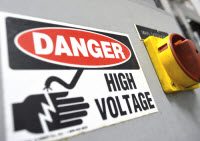Arc Flash Safety: PPE
Note: This article originally appeared on Safety.BLR.com here. Personal Protective Equipment (PPE) is critical to arc flash safety. PPE does nothing to prevent arc flash events from happening. Instead, it helps to reduce possible injury to the worker should an event take place. PPE can only be effective, however, if the worker is wearing it! […]



